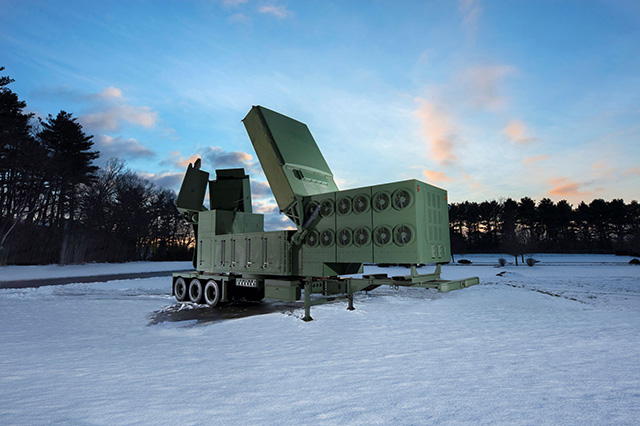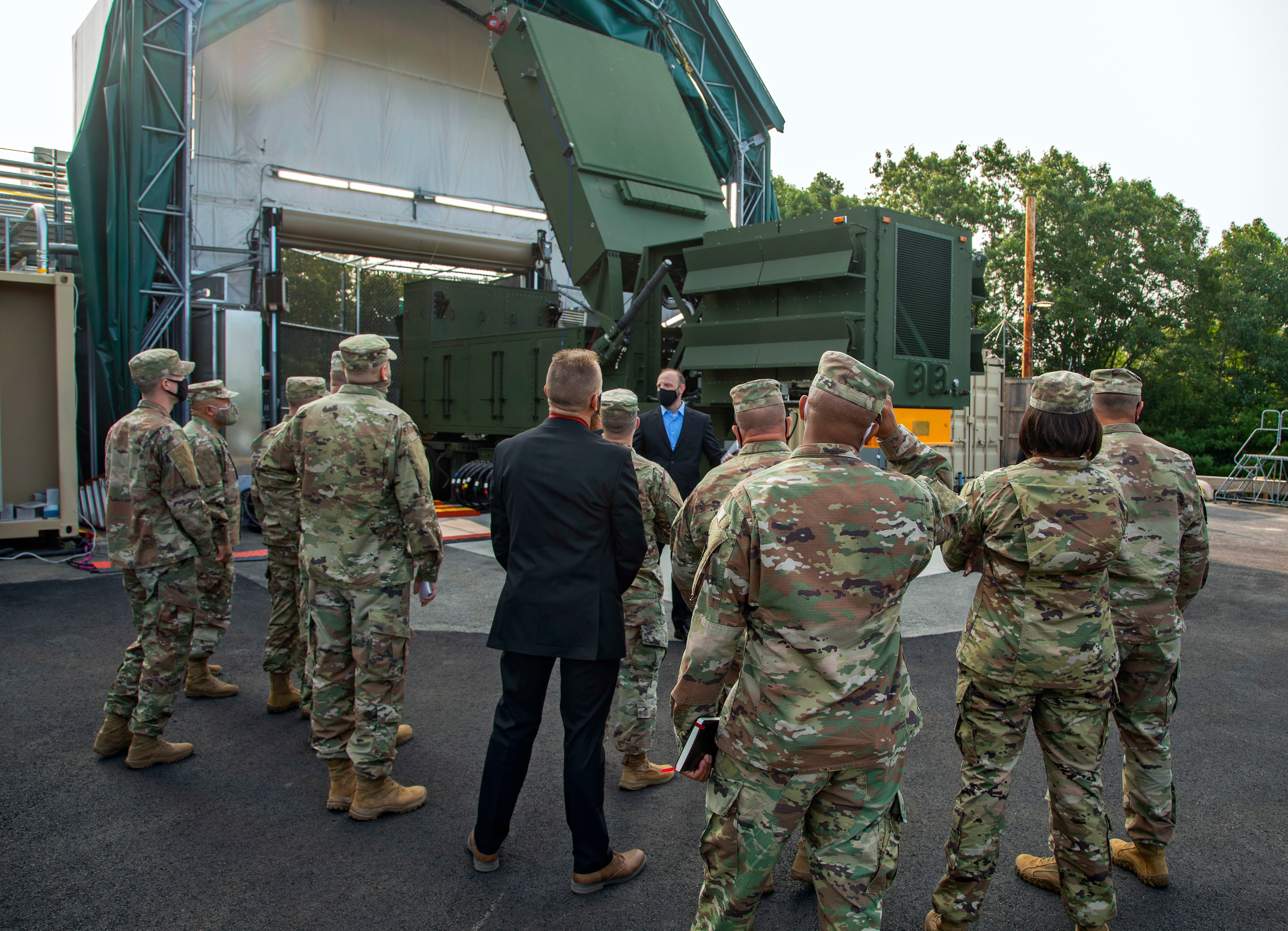WASHINGTON: Raytheon will soon deliver the Army’s first “production readiness” model of the new LTAMDS radar, in time for key tests this summer. By next September (2022), the first six early-model LTAMDS should have passed initial Army testing. That will allow the Lower-Tier Air & Missile Defense Sensor, to use its formal name, to be approved for “Urgent Materiel Release” to Army missile defense units.
If Raytheon makes that deadline, it’ll have gone from initial contract award – in Oct. 2019 – to operational fielding in less than three years. That’s a remarkable pace for the Pentagon, made possible in large part by using the streamlined Other Transaction Authority process instead of traditional contracting regulations.
Now, the initial contract only covers six radars, all technically “production readiness” models rather than the final version. Raytheon is in fact still tweaking the design, based on soldier feedback on the prototype. They’re even redesigning the handles on access doors so they’re less likely to poke someone in the eye.
Ultimately, though, the Army wants to replace every radar in its Patriot force, including training and testing radars as well as combat units. Raytheon Missiles & Defense exec Bob Kelley, a Patriot veteran himself, estimated that as 80-plus radars.
What’s more, because of Patriot’s international sales success, “There’s more than 220 Patriot firing units in the world today [across] 17 partner nations,” Kelley told me. “There is significant international interest in LTAMDS.”
But it doesn’t stop there, because LTAMDS is not just a replacement radar for Patriot. It’s also the first radar built from the start to be compatible with IBCS, the Army’s new network – being built by Northrop Grumman – to connect all air and missile defense systems, from radars to launchers to command posts. Formally called the Integrated Air & Missile Defense (IAMD) Battle Command System, IBCS passed a major field test last August, passing target data from both Patriot and Sentinel radars to Patriot launchers.
While Patriot, Sentinel, and other existing Army systems must be modified to work with IBCS, LTAMDS is IBCS-compatible out of the box. That means it could be bought for use outside Patriot units. For example, through IBCS, the Army could connect LTAMDS to batteries of the new Indirect Fire Protection Capability (IFPC), which is meant to combine interceptors, lasers, and potentially high-powered microwaves to down everything from drones to cruise missiles. Or it could be bought as a free-standing system and pass data to any other IBCS-compliant equipment a nation decided to buy.
IBCS-compatibility is far from Raytheon’s only selling point for LTAMDS, however. Distilled to a number, their pitch is this: LTAMDS can detect and start tracking potential targets about two and a half times further away than Patriot.
How’s that possible? Because electronics have come a long way since Patriot entered service in the 1980s, and there are some things you can’t just add as upgrades to a 1980s-vintage core design. In particular, there’s Gallium Nitride (GaN), which transmits electricity much more efficiently, with much less lost and wasted as heat, than traditional gallium arsenide (GaAs). That lets LTAMDS spend more of each watt on radar transmissions, and much less on cooling itself, than previous radars.
GaN electronics have exploded in the civilian sector, Kelley said, where they power the tiny sensors that warn you when your car’s strayed from your lane or there’s another vehicle in your blindspot. But Raytheon has invested heavily in “military-grade” GaN circuitry, built at its own foundry in Andover, Mass.
Unlike the Patriot radar, LTAMDS is also capable of looking in all directions at once: a pair of small secondary arrays – less powerful than the main array, but each still more potent than Patriot – lets it detect threats from the side and rear.
Putting all these improvements together, Kelley claimed, “what this allows the operator to do is see farther higher and more precisely, and to do so in 360 degrees.”
At the same time, Raytheon is paying attention to mundane details, like door handles. It’s had soldiers from Patriot units come in twice to check out its prototype, Kelley said, and it’s harvesting their feedback for changes to the design, even as the soldiers thrash out how to train up on, maintain, and operate LTAMDS. One unclassified observation Kelley could share was that the door handles on various access bays were just the right height and shape to jab the average male soldier in the eye if they swung open, so the company is replacing them.
Formal testing, however, begins after the first “production readiness” model of LTAMDS is delivered to the Army this summer. That radar – and two more arriving by the end of this year – will go into an official Developmental Test this summer. If it’s successful, it will allow the Army to approve an Urgent Materiel Release in 2022 to send LTAMDS to combat units.
There’ll have to be a further round of testing, including by the Pentagon’s independent Director of Operational Test & Evaluation (DOTE), before the Army – and foreign customers – start buying LTAMDS in bulk.

























